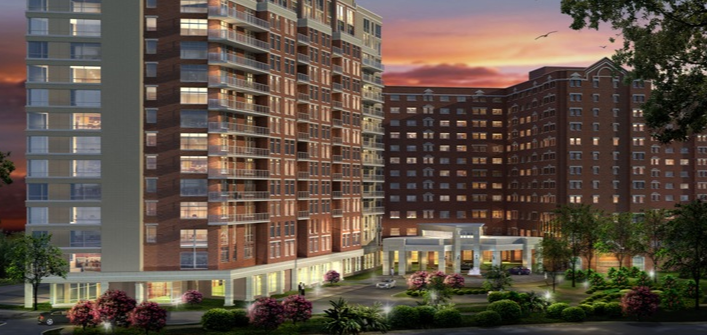The Senior Housing industry’s reputation for resident hospitality was on display March 18th when the National Continuing Care Residents Association (NaCCRA) met at Goodwin House at Bailey’s Crossroads in Virginia.
By Jack Cumming
The Senior Housing industry’s reputation for resident hospitality was on display March 18th when the National Continuing Care Residents Association (NaCCRA) met at Goodwin House at Bailey’s Crossroads in Virginia.
Goodwin House
Goodwin House is a model for how senior housing, when done right, empowers residents to have long and fulfilling lives. Goodwin House President and CEO Kathy Anderson welcomed the NaCCRA representatives. As she spoke and as the group interacted with Goodwin House residents, it was evident that providers and residents working together can be much more than providers who just work for residents as a mission of care and charity.
Moreover, Goodwin House’s financial strength, as reported on its latest Form 990 (that for the Fiscal Year ending September 30, 2014 – nonprofit CCRCs are often slow to account), is positive. That is not always the case for an industry in which many CCRCs dip into resident entrance fees to cover their debt covenants, i.e., they allow assets to be depleted below liabilities. Goodwin House reported net worth of nearly 6% of assets for 2014. While there are CCRCs with stronger balance sheets, the residents’ entrance fee financial stake at Goodwin House remains undiluted.
Healthcare Reform
The featured speaker for the meeting was Marsha R. Greenfield, LeadingAge Vice-President of Legislative Affairs. She spoke on current developments in healthcare reform including the conflicting programs of the two Congressional parties. It was clear that it is a time of political chaos and turmoil inside the beltway.
Ms. Greenfield, and likely LeadingAge, opposes the Republican proposals. For instance, she told the audience that the Republican changes will raise costs for seniors. This had a noticeable impact on the audience.
This assertion took some thought to understand. As it turns out, the allusion was to a mandate in the Affordable Care Act that premiums for older people be no more than three times those for younger people. In fact, data show that medical care costs for people over 70 are roughly eight times those for people in their twenties.
We know this intuitively; our experience shows that age brings doctors’ visits and infirmity. Thus, the pricing mandate in the Affordable Care Act meant that younger people were asked to pay more than their benefit expectation so that the elderly could pay much less than the costs they incur.
One result has been that many young people have found Affordable Care Act coverage too expensive, so they have opted out of the program even though they pay a penalty for their non-participation. This has undermined the financial soundness of the Act and has been a partial reason for the upward spiral of premiums.
The Republicans have proposed changing the ratio from 3:1 to 5:1, which would be fairer, but which would mean – as Ms. Greenfield noted – that seniors would have to pay more. While many Republican proposals may be ill-considered political posturing, the issue of equity in how healthcare is paid for is a topic that deserves in-depth consideration.
Video Streaming Seniors
This NaCCRA meeting also showcased the role that technology can play to bring more people into conference with each other. For the first time the entire meeting was video streamed live to all members and others who were interested. Since this was a first, it was experimental, and we learned from the experience, but the streaming succeeded. In the future, even residents and members who are no longer able to travel will be able to participate in NaCCRA meetings, committees, and discussions. Technology is the great enabler for senior housing’s future.
Technology was also on display by the residents of Goodwin House. Many years ago, the residents wanted a resident communications capability that would allow them to check menus, enter orders for maintenance, etc., and generally to handle administrative matters online. Management responded positively and funded the residents $13,000 budget to get the system up and running.
The load that it has lifted from staff was evident in the calm demeanor of those working at the front desk, in most CCRCs a hub of resident phone request activity. One can only imagine that $13,000 investment has repaid itself several times over. What’s more, it empowered a group of involved residents and gave them meaning and purpose in service to the community in which they live.
The impression left by the hospitality of our Goodwin House hosts for this important resident gathering will long linger. Goodwin House evinces the best of CCRC living. The continuum of support and care that is the underpinning rationale for CCRC living is immeasurably enhanced by the smoothly working partnership between management and residents.
There is much that we all can learn from the Goodwin House paradigm. Of course, there’s always room for improvement, but residents and managers working together can be more than either can be alone. The best of how Americans can age was on display at Goodwin House.





